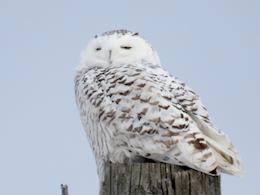
Common Yellowthroat
Migration has been strange this year. Because of the lengthy cold spell at the beginning of May it seemed as if migration had stalled; for so long I felt as though I were waiting for it to begin, then things happened so quickly that now I wonder whether it has passed me by. The White-crowned Sparrows that usually show up in my backyard every year between May 3rd and 5th didn’t arrive until the 14th; the Common Terns that arrive at the Eagleson Ponds between May 10th and May 14th didn’t arrive until May 19th. Neither species stayed long, either. The terns were only there for one day before moving on, instead of spending two or three days. It is harder to know if the White-crowned Sparrow I saw over the course of a few days was the same one or a different one, as many have been singing in our area in the middle of the month.
The warblers came, and the warblers went. I’ve had several Black-throated Blue Warblers this year, and many repeat sightings of local breeding species – but of the ones that only pass through, I’ve sometimes only been lucky to get one: one Cape May Warbler, one Blackburnian Warbler, one Tennessee Warbler, one Bay-breasted Warbler. Again, is this a reflection of my spending time mainly in Kanata south, rather than heading for the migrant traps along the river? There have been excellent reports from the usual spots (Mud Lake, Andrew Haydon Park), but even as the city parks reopened on May 6th and the NCC parking lots reopened on May 22nd as a result of declining Covid-19 cases in the city, I’ve been reluctant to go to the normal spring hotspots to avoid the crowds that tend to gather there, both birding and non-birding alike. This has less to do with any fear of the coronavirus than my preference for quiet birding experiences, away from the loud chatter and narrow, crowded trails that both increase exponentially as the spring wears on and weather warms up.
Continue reading →









